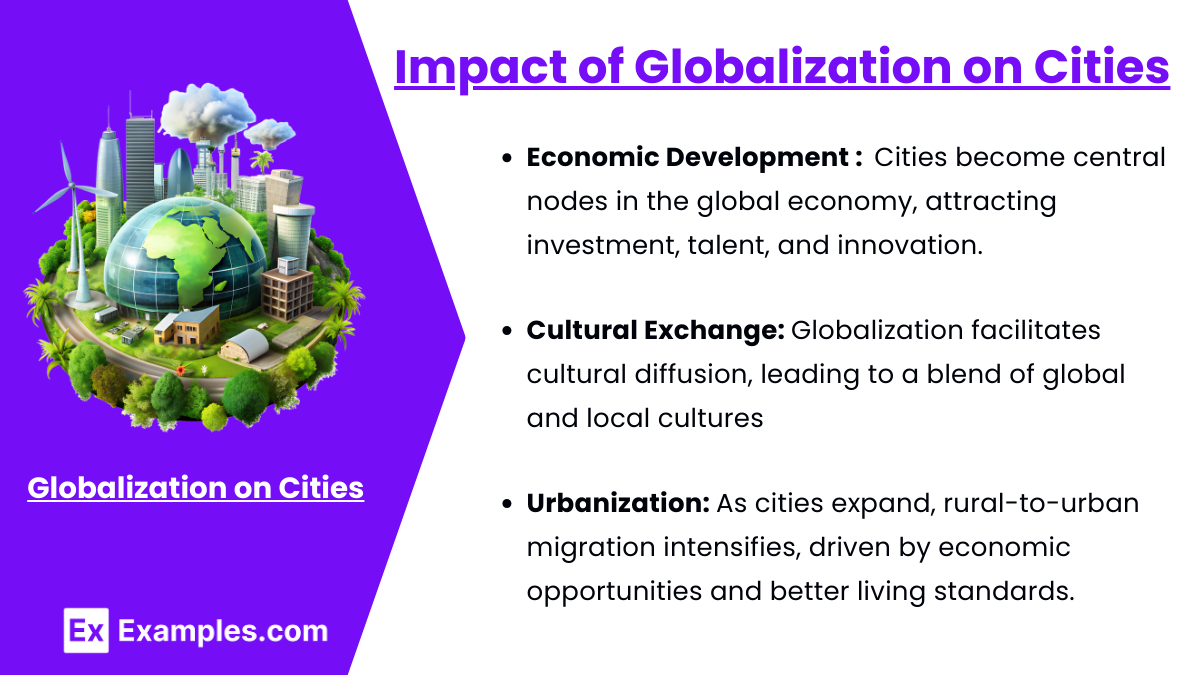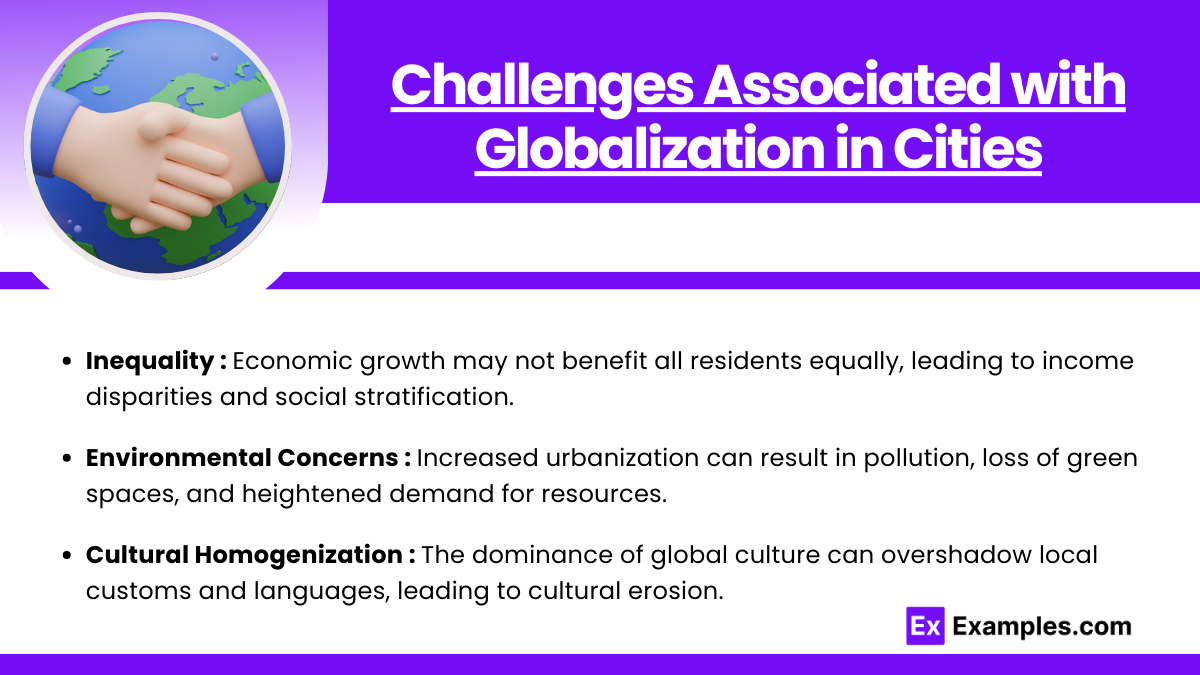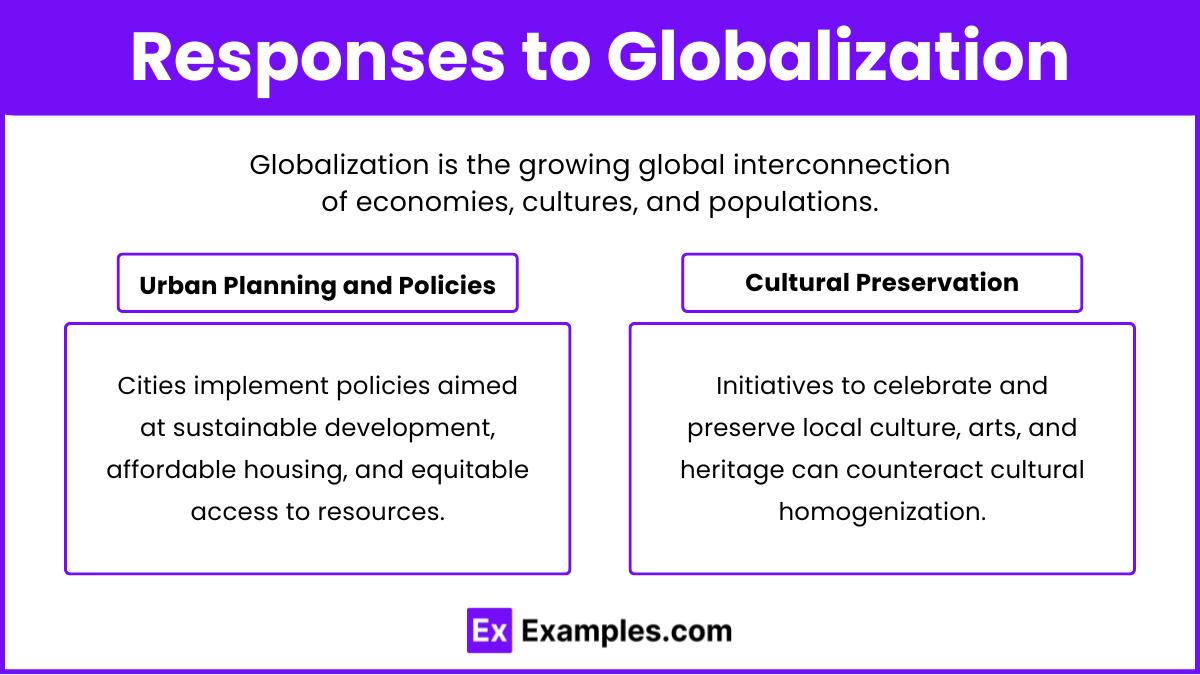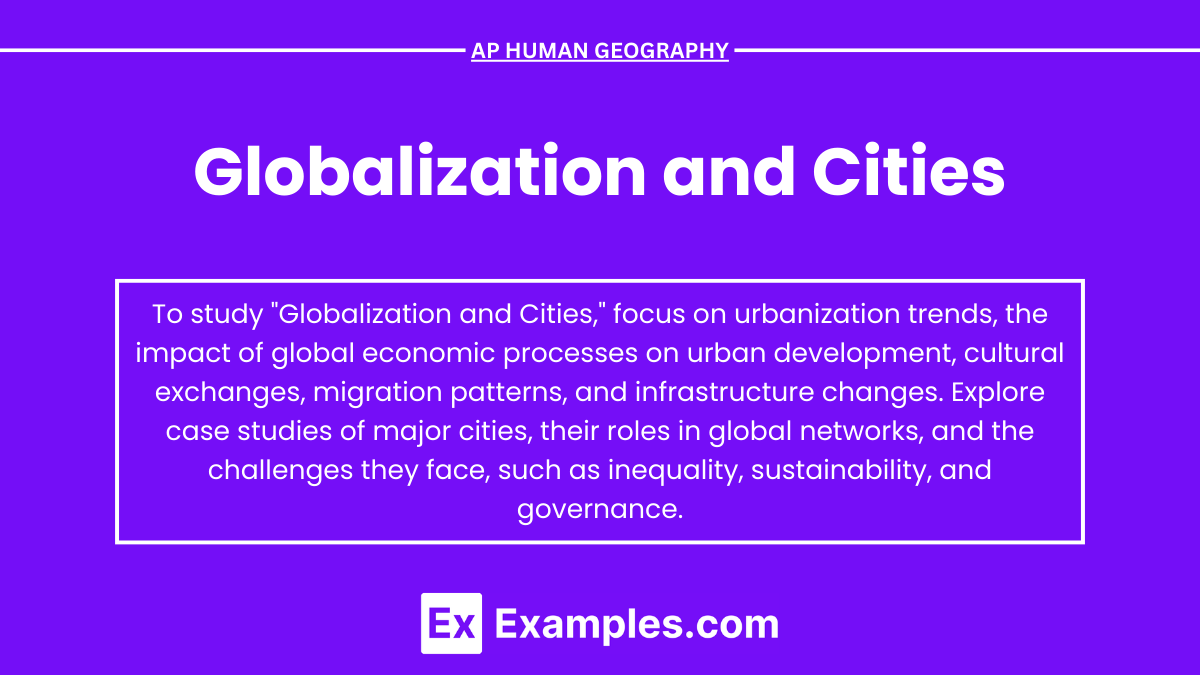Globalization profoundly impacts cities, transforming them into interconnected hubs of economic, cultural, and social activity. As urban areas expand and diversify, they attract investment and talent, becoming critical nodes in the global economy. This interconnectedness fosters cultural exchange and innovation within AP Human Geography while also presenting challenges such as inequality, environmental degradation, and cultural homogenization. Understanding the dynamics of globalization within urban contexts is essential for analyzing the complex relationships between global forces and local responses, shaping the future of cities worldwide.
Free AP Human Geography Practice Test
Learning Objectives
In studying "Globalization and Cities" for AP Human Geography, you should focus on understanding the processes and effects of globalization on urban environments. Key learning objectives include analyzing the economic, social, and cultural impacts of globalization on cities, identifying the challenges such as inequality and environmental degradation, and exploring urbanization trends. Additionally, you should examine how cities respond to globalization through planning and policy initiatives, as well as the importance of cultural preservation in maintaining local identities amidst global influences.
Globalization and Cities
Globalization refers to the process by which businesses, cultures, and economies become interconnected and interdependent on a global scale. It is driven by advancements in transportation, communication, and technology, leading to increased cultural exchange and economic integration.
Impact of Globalization on Cities

Economic Development:
Cities become central nodes in the global economy, attracting investment, talent, and innovation.
The rise of multinational corporations has led to the establishment of global cities (e.g., New York, London, Tokyo) that serve as hubs for finance, trade, and commerce.
Cultural Exchange:
Globalization facilitates cultural diffusion, leading to a blend of global and local cultures (glocalization).
Urban areas often experience the proliferation of global brands and cultural products, impacting local traditions and lifestyles.
Urbanization:
As cities expand, rural-to-urban migration intensifies, driven by economic opportunities and better living standards.
Global cities often attract immigrants, contributing to demographic diversity and multiculturalism.
Challenges Associated with Globalization in Cities

Inequality:
Economic growth may not benefit all residents equally, leading to income disparities and social stratification.
Gentrification can displace lower-income residents as wealthier individuals move into urban areas.
Environmental Concerns:
Increased urbanization can result in pollution, loss of green spaces, and heightened demand for resources.
Cities face challenges related to sustainability and climate change, necessitating strategies for resilience.
Cultural Homogenization:
The dominance of global culture can overshadow local customs and languages, leading to cultural erosion.
Cities may struggle to maintain their unique identities amidst global influences.
Responses to Globalization

Globalization refers to the increasing interconnectedness and interdependence of the world's economies, cultures, and populations, driven by advances in communication, transportation, and trade. It involves the exchange of goods, services, information, and ideas across international borders, creating a global marketplace and fostering cultural integration.
Urban Planning and Policies:
Cities implement policies aimed at sustainable development, affordable housing, and equitable access to resources.
Strategies may include promoting public transportation, green spaces, and mixed-use developments.
Cultural Preservation:
Initiatives to celebrate and preserve local culture, arts, and heritage can counteract cultural homogenization.
Local governments and organizations may promote events that showcase indigenous traditions and practices.
Examples
Example 1. New York City as a Global Financial Hub
New York City exemplifies globalization through its role as a leading financial center. The presence of major financial institutions, such as the New York Stock Exchange and numerous multinational banks, attracts investors and businesses from around the world. This concentration of capital and talent has established NYC as a global economic powerhouse, influencing financial markets and trends internationally. The city’s diverse population further enriches its cultural fabric, showcasing how economic globalization fosters cultural exchange.
Example 2. Tokyo and Technological Innovation
Tokyo stands as a prime example of globalization through technological innovation and industrial strength. As a global city, Tokyo is home to major technology firms and research institutions that drive advancements in robotics, electronics, and transportation. The city's infrastructure, such as its extensive public transit system, exemplifies the integration of advanced technology into urban life. Additionally, Tokyo’s role in the global market attracts a workforce from various countries, contributing to its multicultural environment and making it a center for global tech innovation.
Example 3. Mumbai and Economic Disparities
Mumbai illustrates the complex relationship between globalization and urban inequality. While the city has emerged as a significant financial and entertainment hub in India, attracting foreign investment and talent, it also faces stark economic disparities. The rapid influx of people from rural areas seeking better opportunities has led to the expansion of informal settlements, often referred to as slums. This juxtaposition highlights how globalization can generate economic growth while simultaneously exacerbating social inequalities within urban environments.
Example 4. London as a Cultural Melting Pot
London showcases globalization through its cultural diversity and international influence. As one of the world’s most prominent cities, it serves as a hub for finance, education, and the arts, attracting individuals from various backgrounds. This cultural melting pot fosters a dynamic environment where global cuisines, languages, and traditions coexist. Events like the Notting Hill Carnival celebrate this diversity, emphasizing how globalization facilitates cultural exchange while enriching the urban experience.
Example 5. Shanghai’s Rapid Urbanization
Shanghai is a vivid example of globalization driving rapid urbanization and development. Over the past few decades, the city has transformed from a historical port into a modern metropolis, marked by skyscrapers and economic dynamism. The establishment of free trade zones and foreign investment has propelled its growth, making it a central player in global trade. However, this rapid development poses challenges, including environmental degradation and housing shortages, underscoring the complexities of globalization in urban contexts.
Multiple Choice Questions
Question 1
Which of the following best describes a "global city"?
A) A city primarily known for its agricultural output.
B) A city that serves as a central hub for global finance, culture, and commerce.
C) A city that has a low population density and extensive rural areas.
D) A city that primarily serves local markets with minimal international interaction.
Answer: B) A city that serves as a central hub for global finance, culture, and commerce.
Explanation: Global cities, also known as "world cities," are characterized by their significant influence on global affairs, including economics, culture, and politics. They are often home to major multinational corporations, financial institutions, and cultural institutions. Unlike cities focused on agriculture or local markets, global cities are integrated into the global economy, facilitating international trade and cultural exchange.
Question 2
What is one major consequence of globalization on urban areas?
A) Decreased immigration rates in major cities.
B) Increased cultural homogeneity across diverse urban populations.
C) Complete elimination of local traditions and customs.
D) Reduced urban population density due to rural flight.
Answer: B) Increased cultural homogeneity across diverse urban populations.
Explanation: Globalization often leads to the spread of similar cultural practices and products worldwide, resulting in increased cultural homogeneity. As global brands and media dominate urban landscapes, local traditions may be overshadowed. However, it is important to note that while there may be a trend toward homogeneity, many cities also experience cultural syncretism, where local customs adapt and blend with global influences, rather than completely disappearing.
Question 3
Which of the following is a challenge associated with globalization in cities?
A) The rise of localized economies that thrive independently.
B) The improvement of public transportation systems.
C) The displacement of lower-income residents due to gentrification.
D) The reduction in global trade networks.
Answer: C) The displacement of lower-income residents due to gentrification.
Explanation: Gentrification is a process where urban neighborhoods undergo transformation due to an influx of wealthier residents, often leading to rising property values and rents. This can displace long-standing, lower-income residents who can no longer afford to live in the area. While globalization can stimulate economic growth and revitalization of urban spaces, it also poses significant social challenges, including increasing inequality and loss of community identity.


